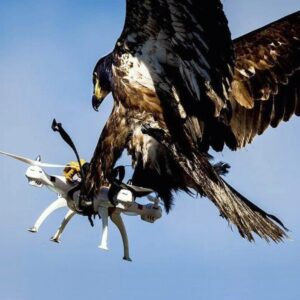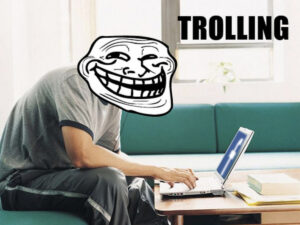With everyone having access to throw whatever they would like up onto the internet, we must step back and ask ourselves “What is real and what is fake?” While some people put this false information up for clicks, views, and clout, some are just doing it to troll victims online. Despite their reasoning of why, it is happening everyday, and it is our responsibility filter through all the nonsense.

As we’ve entered the age of artificial intelligence (AI), this just adds to the problem of what is real and what is not. This is demonstrated in the article Break the Fake as the quiz shows a hawk grabbing a drone as prey. This photo is 100% AI generated, yet from the untrained eye, one cannot tell the difference. This doesn’t just stop in photography. AI can also create extremely vivid videos. As talked about in class a few weeks ago, this can also lead into fake videos such as pornography involving you or a loved one. Scary, I know! On top of this, we also must cipher through a vast number of new articles to find out if the information we are reading is reliable or not. As seen in Can You Spot the Fake News Headlines? This just shows that we need to be educating not only our students, but ourselves as well on how to identify if these news articles are legit or not.

I am going to assume that many of you all are also semi-addicted to their phones like I am. More specifically, addicted to your any social media accounts. Unfortunately, this type of trolling that we are seeing doesn’t just stop depending on what website you are on, it is flooded on our social media feeds as well as seen in Spot the Troll. This becomes extremely concerning as this is where most of the students we teach get their “news” from.

Moving into a teaching role, I think there is many things we can do to educate our students on how to become more away of identifying the fake news/trolls out there. First off, I think it is essential to go over what a secured site looks like in oppose to one that is not. As these children are moving into their teenage and young adult years, they must know when a site is secure or not when giving banking information out. In addition, as classrooms are moving more towards the “Genius Hour” activities, this would be a great way to introduce the topic and have students explore the issue.
What other activities/lessons could we do in the classroom to raise concern on the issue?
Let me know down below.
Zach
Hi Zach,
I completely agree with you, by showing students and explaining to them what trustworthy cites look like can help them when they are doing online research or anything online. I would also suggest showing those AI generated photos to the class because they do look so real and explaining to the students how AI works and why it is important to be aware of fake things generated by it would also be important to do.